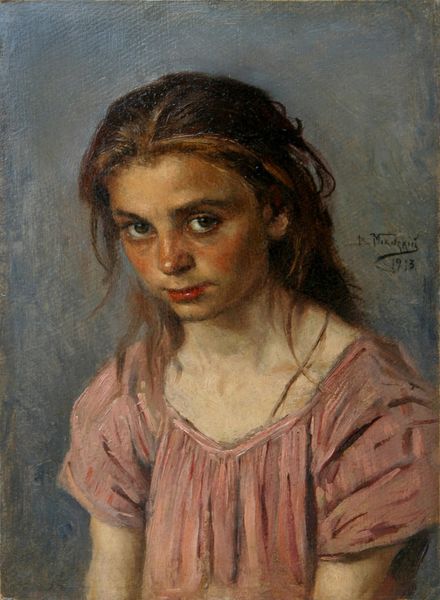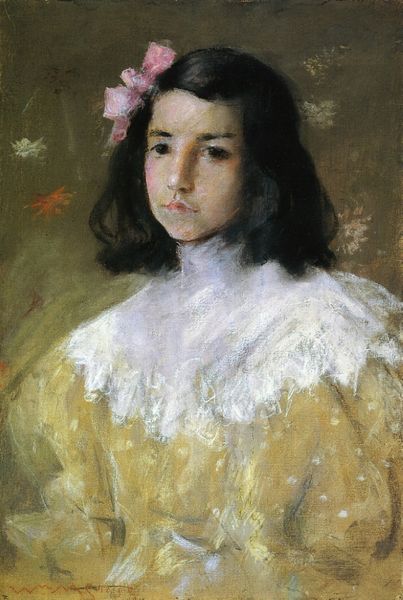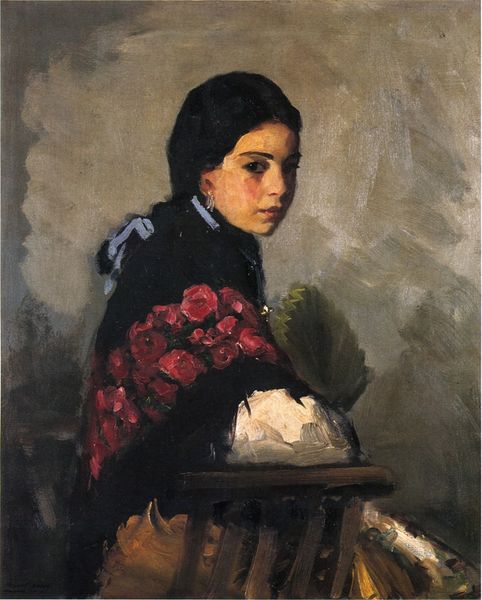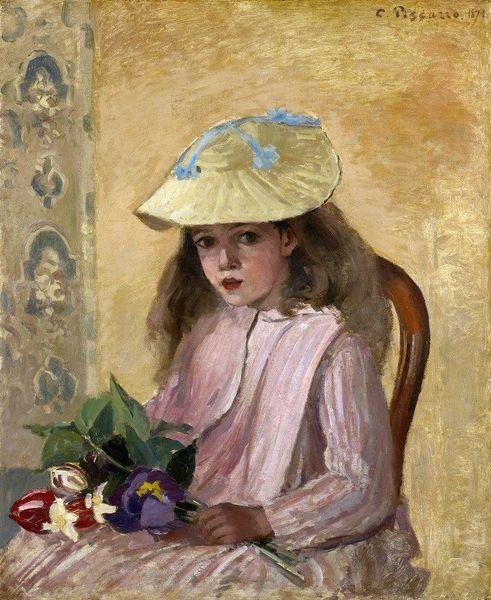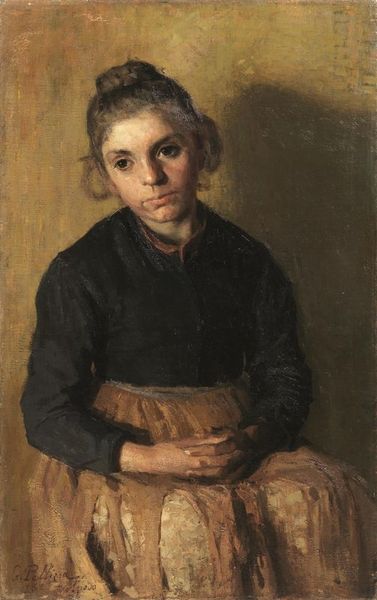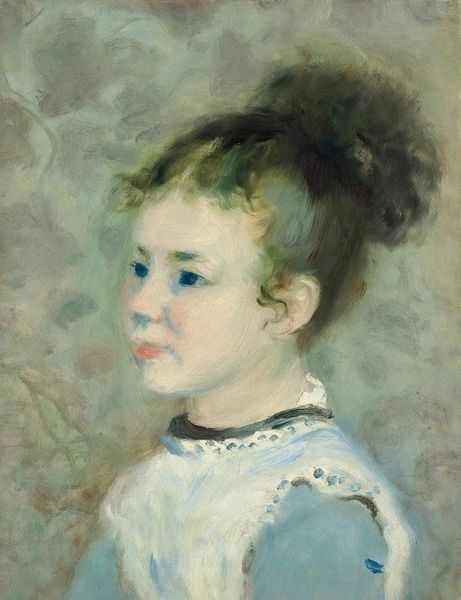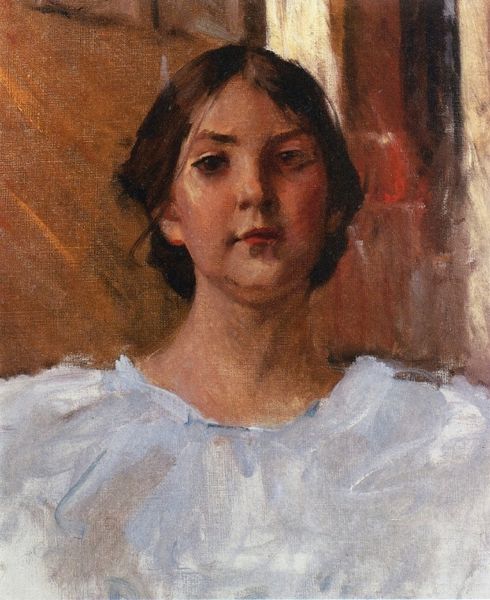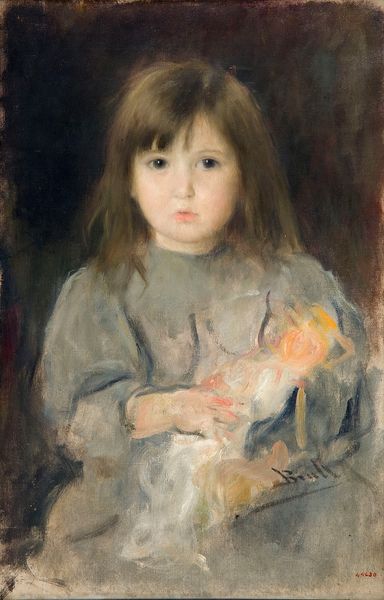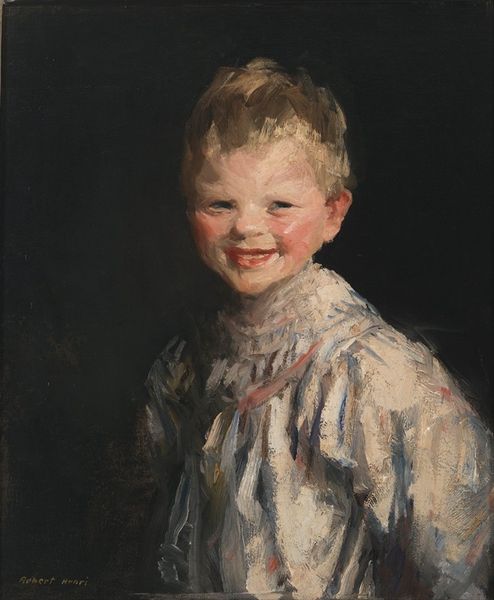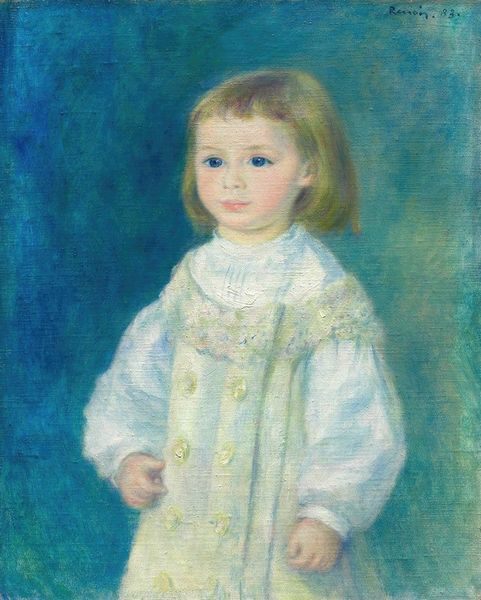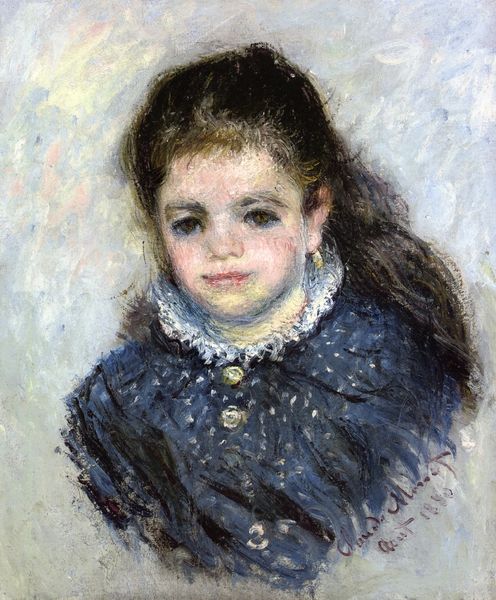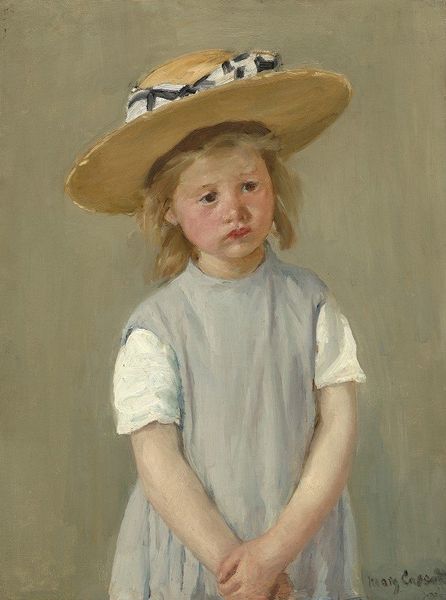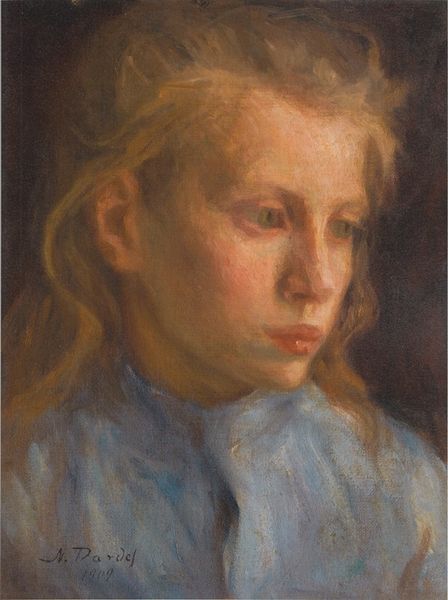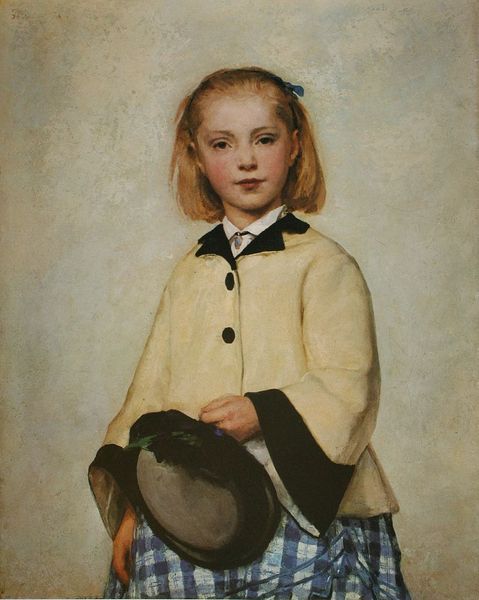
Dimensions: 42 x 24 cm
Copyright: Public domain
Curator: Vladimir Makovsky’s "Girl with Flowers", created in 1912, offers a tender, intimate glimpse into early 20th-century Russian life. The artwork currently resides in the Tula Regional Museum of Fine Arts. Editor: The immediate thing that hits me is the light, the subtle brushstrokes giving off an airy, dreamlike quality. There's almost a vulnerability in her eyes that I can't quite shake off. Like a faded photograph, only with the lilacs in bloom. Curator: Makovsky, known for his genre paintings, frequently depicted scenes of everyday life, often focusing on the plight of the poor and marginalized. However, here, while we don’t have the obvious signs of hardship, there’s definitely a sense of reserved solemnity in the girl's posture. It’s more psychological than overtly socio-political. Editor: Exactly! Her expression is both innocent and burdened, carrying secrets within the painting's silence. And the way those lilacs, are practically bursting out of the frame, there’s an ephemeral feel, that they're here and gone. What could lilacs represent in this piece? Curator: Symbolically, lilacs often stand for first love, youth, and fleeting beauty. The presence of these blooms perhaps highlights a transient period in the girl's life. Considering the political turbulence brewing in Russia at the time, such symbolism could also be viewed as a wistful reflection on a vanishing era of innocence. It also must be noted that at this point in history, many female-figure paintings would have traditionally been commissioned from members of the upper class. That may make this scene even more complex. Editor: Hmm, love that point. I see now the colors play so delicately – the pale purples, the faded greens against her rustic dress. Her gaze follows me regardless where I stand - I feel that Makovsky tried to hint a world unseen. I feel melancholy seeping out! Curator: I think melancholy might be spot on; it definitely conveys the weight of circumstances through understated tones. I appreciate you pointing that out, actually. This really does emphasize how societal elements affected everyone during that time in history, regardless of status. Editor: Glad to make the observation. As always, so many thoughts emerge when simply looking at the painting in front of you - right? Well, I am eager for our next visit! Curator: Absolutely. This has truly highlighted art's reflection of life and vice versa. Until next time.
Comments
No comments
Be the first to comment and join the conversation on the ultimate creative platform.
